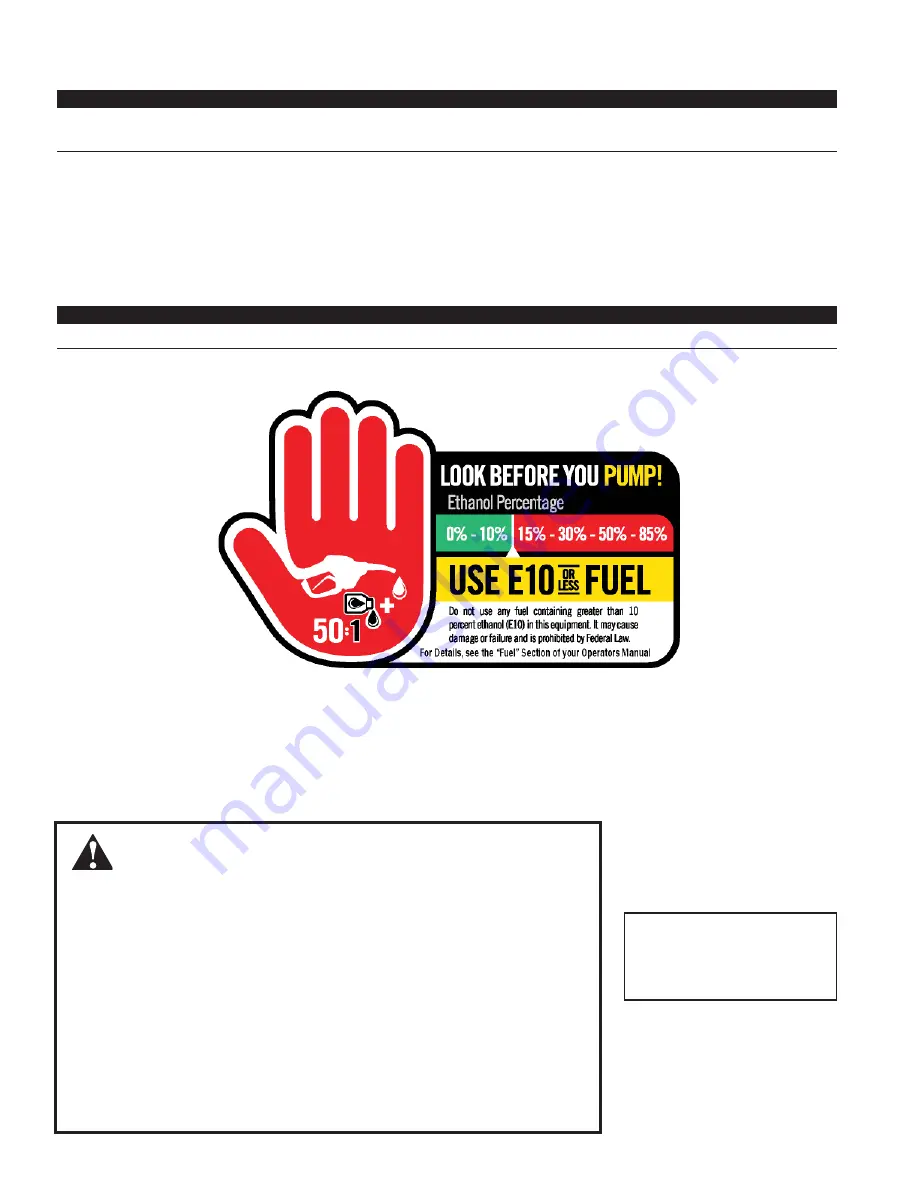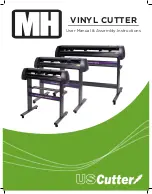
12
IMPORTANT!
Spilled fuel is a leading cause of hydrocarbon emissions. Some states may require the use of automatic fuel shut-off
containers to reduce fuel spillage.
After use
• DO NOT store a unit with fuel in its tank. Leaks can occur. Return unused fuel to an approved fuel storage
container.
Storage -
Fuel storage laws vary by locality. Contact your local government for the laws affecting your area. As a
precaution, store fuel in an approved, airtight container. Store in a well-ventilated, unoccupied building, away from
sparks and flames.
IMPORTANT!
Stored fuel may separate. ALWAYS shake fuel container thoroughly before each use.
■
NEVER
smoke or light fires near the
engine.
■
ALWAYS
stop the engine and allow it
to cool before refueling.
■
ALWAYS
Wipe all spilled fuel and
move at least 3 meters (10 feet) from
the fueling point and source before
starting.
■
NEVER
place flammable material
close to the engine muffler.
■
NEVER
operate the engine without
the muffler and spark arrester screen
in place and in good working condition.
■
FUEL IS HIGHLY FLAMMABLE.
■
ALWAYS
store gasoline in a container
approved for flammable liquids.
■
ALWAYS
inspect the unit for fuel
leaks before each use. During each
refill, check that no fuel leaks from
around the fuel cap and/or fuel tank.
If fuel leaks are evident, stop using the
unit immediately. Fuel leaks must be
repaired before using the unit.
■
ALWAYS
move the unit at least
3 meters (10 feet) away from a
fuel storage area or other readily
flammable materials before starting
the engine.
Filling the fuel tank
WARNING!
Minimize the Risk of Fire
1.
Place the unit on a flat, level
surface.
2. Clear any dirt or other debris
from around the fuel filler cap.
3.
Remove the fuel cap, and fill
the tank with clean, fresh fuel.
4.
Reinstall the fuel filler cap and
tighten firmly.
5. Wipe away any spilled fuel
before starting engine.
CAUTION!
Slowly remove the fuel cap
only after stopping the engine
Mixing Fuel
(continued)













































